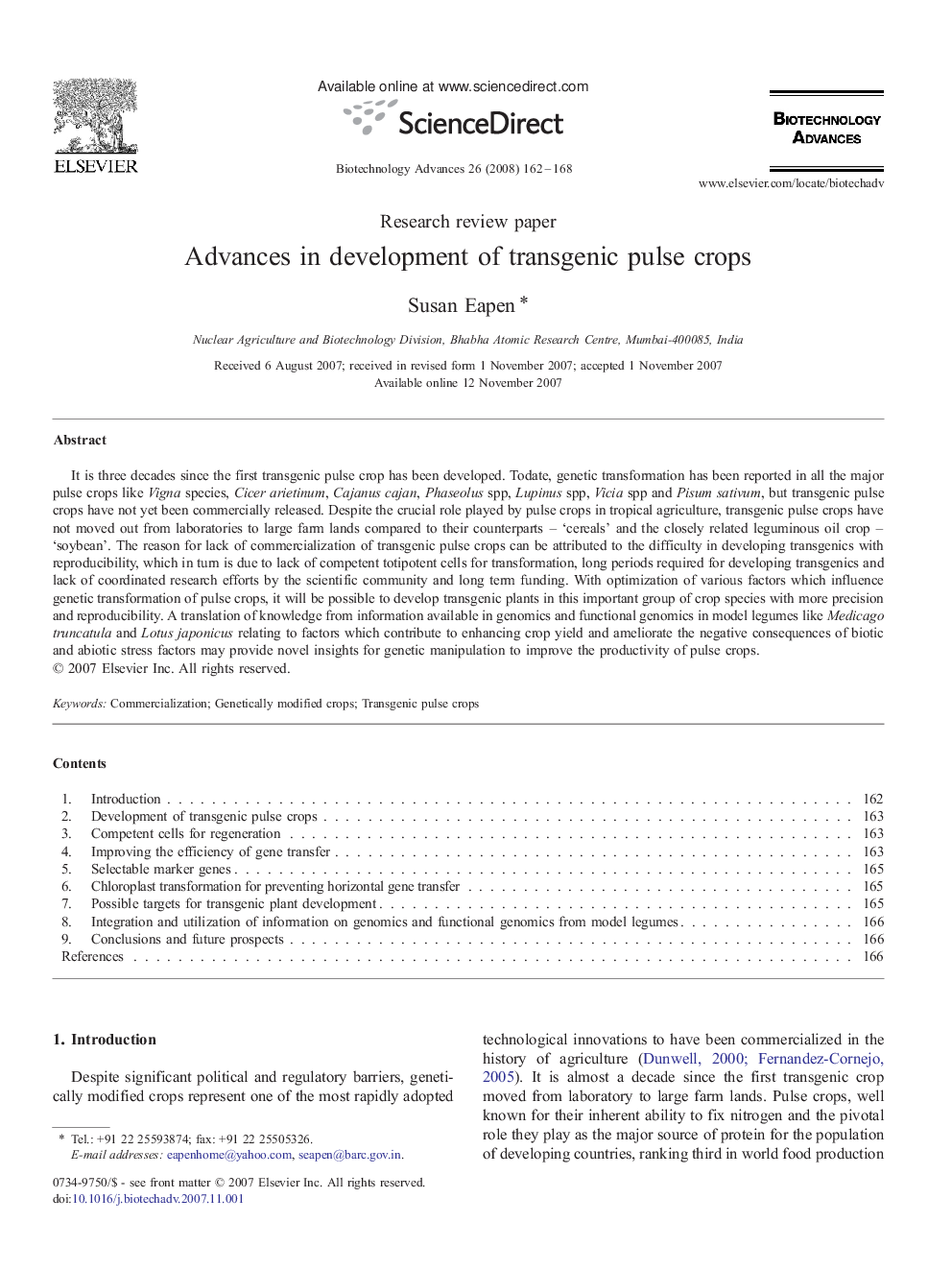| Article ID | Journal | Published Year | Pages | File Type |
|---|---|---|---|---|
| 14632 | Biotechnology Advances | 2008 | 7 Pages |
It is three decades since the first transgenic pulse crop has been developed. Todate, genetic transformation has been reported in all the major pulse crops like Vigna species, Cicer arietinum, Cajanus cajan, Phaseolus spp, Lupinus spp, Vicia spp and Pisum sativum, but transgenic pulse crops have not yet been commercially released. Despite the crucial role played by pulse crops in tropical agriculture, transgenic pulse crops have not moved out from laboratories to large farm lands compared to their counterparts – ‘cereals’ and the closely related leguminous oil crop – ‘soybean’. The reason for lack of commercialization of transgenic pulse crops can be attributed to the difficulty in developing transgenics with reproducibility, which in turn is due to lack of competent totipotent cells for transformation, long periods required for developing transgenics and lack of coordinated research efforts by the scientific community and long term funding. With optimization of various factors which influence genetic transformation of pulse crops, it will be possible to develop transgenic plants in this important group of crop species with more precision and reproducibility. A translation of knowledge from information available in genomics and functional genomics in model legumes like Medicago truncatula and Lotus japonicus relating to factors which contribute to enhancing crop yield and ameliorate the negative consequences of biotic and abiotic stress factors may provide novel insights for genetic manipulation to improve the productivity of pulse crops.
